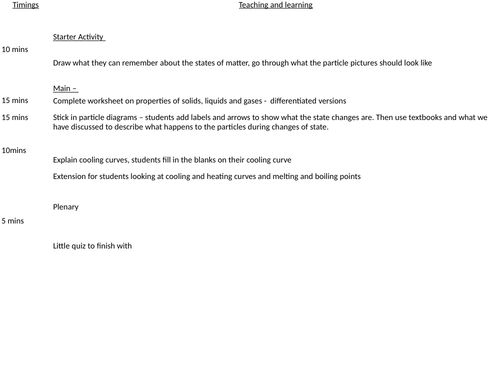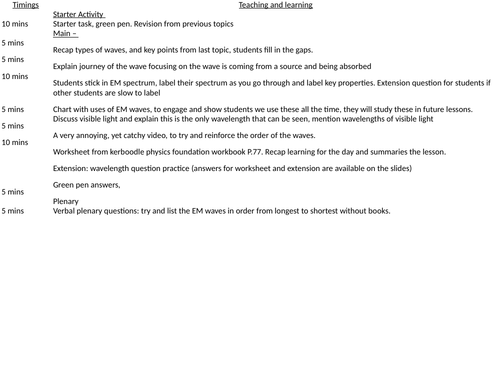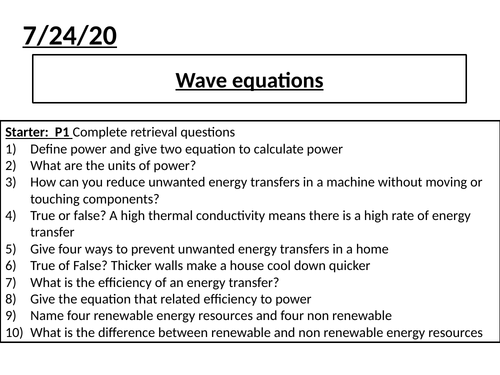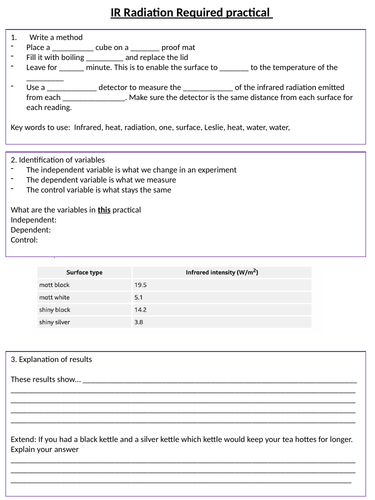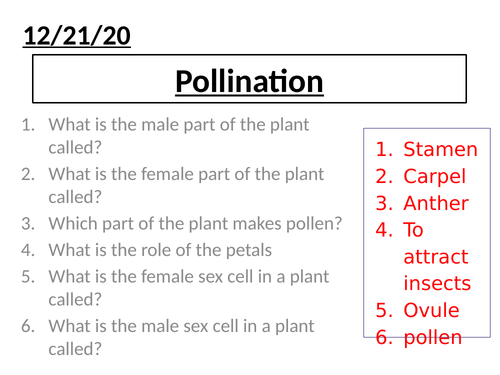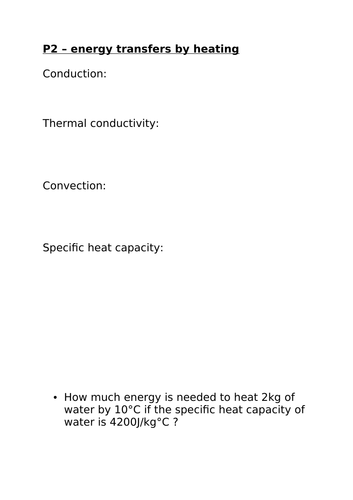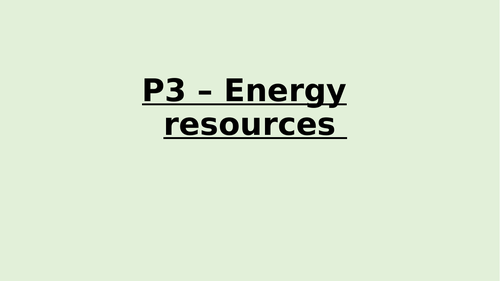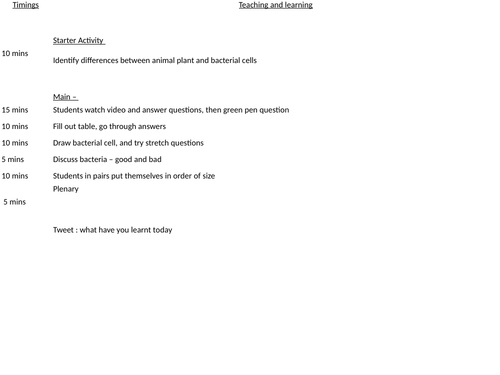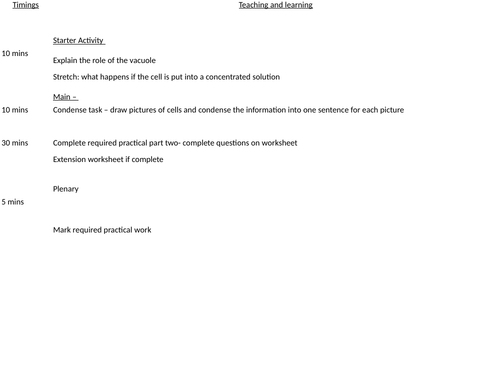
123Uploads
27k+Views
8k+Downloads
All resources

B2 - cell division revision foundation
Revision powerpoint with booklet
for foundation students
Booklet contains activities and information for students to complete

Energy transfers
Simple worksheet to show energy transfers and diagrams. Aimed at year 7 students, could be used for lower ability older students.
A Higher and lower ability version.

C1.6 structure of the atom
aimed at a mixed ability year 9 class
Starter Activity
Put atom structures in the correct order thinking back to last lesson
Main –
Work through work sheet in steps. To ensure maximum understanding
Chase the element – race task to find out what each element around the room is, identifying proton neutron and electron number and matching it with an element on the periodic table
Make a model of an atom using string, and card (cut card into circles use string to attach them together)
Plenary
Tweet what you’ve learnt tday

C3.1 States of matter - Foundation
Aimed at a foundation class
Starter Activity
Draw what they can remember about the states of matter, go through what the particle pictures should look like
Main –
Complete worksheet on properties of solids, liquids and gases - differentiated versions
Stick in particle diagrams – students add labels and arrows to show what the state changes are. Then use textbooks and what we have discussed to describe what happens to the particles during changes of state.
Explain cooling curves, students fill in the blanks on their cooling curve
Extension for students looking at cooling and heating curves and melting and boiling points
Plenary
Little quiz to finish with

C3.5 covalent bonding - foundation
aimed at a lower ability class
Starter Activity
Mark homework
Main –
Think pair share – spot the difference between ionic and covalent bonding. Then write down definition of covalent bonding
Watch video, only watch until 2 minutes. Answer questions whilst video is going. Goo through and green pen answers after
Go through the two examples on the board and show what happens
Students then have a go at completing their worksheet to show covalent bonds
Extension: decide if the compounds are ionic or covalent and explain how they know
Plenary
Plenary, fill in the gaps and go over answers

C3.4 Giant ionic structures - foundation
aimed at a lower ability class
Starter Activity
Using previous knowledge make predictions about ionic compounds
Main –
Go through and discuss giant ionic lattices
Students move around the room to find the information sheet to find out if there prediction was correct or not and why
Practical with a dissolved ionic compound to show it can conduct electricity. Make sure say that molten ionic compounds too and what a molten ionic compound is
Plenary
Exam question plenary

C12. treating waste water
For low ability students. targets level 4
Starter: differentiated stater based on prior learning of the topic
answers on following slide
Main: think pair share: where do we get waste water from
video: watch a video, try and pick out what the stages of treatment for waste water are
differentiated worksheets, to explain the process of waste water treatment
Extension: differentiated extension questions
Plenary: copy and complete two sentences

C12.5 Life cycle assessments
Aimed at low ability students, targets level 4
Starter: differentiated starter questions
Main: watch the video about a yogurt pot,thin about its journey
fill in grid showing the different stages of the LCA use textbooks to support
Class vote - which do they think is the most enviromentally damaging paper or plastic bags
Carry out LCA of paper and plastic bags using textbooks
evaluate which they think is most enviromentally damaging
Plenary: question to list the stages of the LCA

P12.1 Electromagnetic spectrum
Aimed at low ability students. Targets of level 4.
Starter task, green pen. Revision from previous topics
Main –
Recap types of waves, and key points from last topic, students fill in the gaps.
Explain journey of the wave focusing on the wave is coming from a source and being absorbed
Students stick in EM spectrum, label their spectrum as you go through and label key properties. Extension question for students if other students are slow to label
Chart with uses of EM waves, to engage and show students we use these all the time, they will study these in future lessons. Discuss visible light and explain this is the only wavelength that can be seen, mention wavelengths of visible light
A very annoying, yet catchy video, to try and reinforce the order of the waves.
Worksheet from kerboodle physics foundation workbook P.77. Recap learning for the day and summaries the lesson.
Extension: wavelength question practice (answers for worksheet and extension are available on the slides)
Green pen answers,
Plenary
Verbal plenary questions: try and list the EM waves in order from longest to shortest without books.

Wave equations
Starter - retrieval questions
Main - Wave equations explained with examples.
wave period questions on the powerpoint.
Worksheet that is differentiated with questions for the wave equation

Properties of waves
Starter - retrieval questions based on P1 energy
Main -
-explaination of what a wave is
task to sort waves into mechanical / electromagnetic
Description of transverse/longitudinal
Worksheet to complete, answers included
Exam question plenary

P2 energy transfer by heating
P2 - energy transfer by heating
Revision powerpoint for the topic, with a booklet for students to work through
P2 following the kerboodle specification

P3 - Energy resources summary
Summary of the P3 topic
Including a revision booklet for students to work through

Unicellular organisms KS3
Aimed at mixed ability year 7 class
Starter: how many cells make up the human body
Main: key definitions uni/multi cellular
task to move around the room and find out about different unicellular organisms
Comparison task to compare organelles in unicelllular organisms
Plenary: summary questions based on the lesson

B1.3 Eukaryotic and prokaryotic cells
Aimed at a mixed ability year 9 class
Starter: identify differences between plant/animal/bacterial cells from images given
Main: Watch video, answer questions, green pen (answers provided on ppt)
Fill out comparison table and draw own bacterial cell
stretch questions to reach highest levels
Discussion are all bacteria bad? images to support
6 mark question to compare cells
Plenary: order of magnitude, in pairs select an image then put themselves in order

Osmosis required practical
Two lessons split for the required practical, differentiated sheets available and practical worksheet
Bundle

B1 - cell structure and transport
complete lessons covering kerboodle B1.
the world of the microscope
animal and plant cells
eukaryotic and prokaryotic cells
specialised animal cells
specialised plant cells
diffusion
osmosis
osmosis in plants
active transport
specialised exchange surfaces
Including required practicals
Lots of differentiation in lessons




